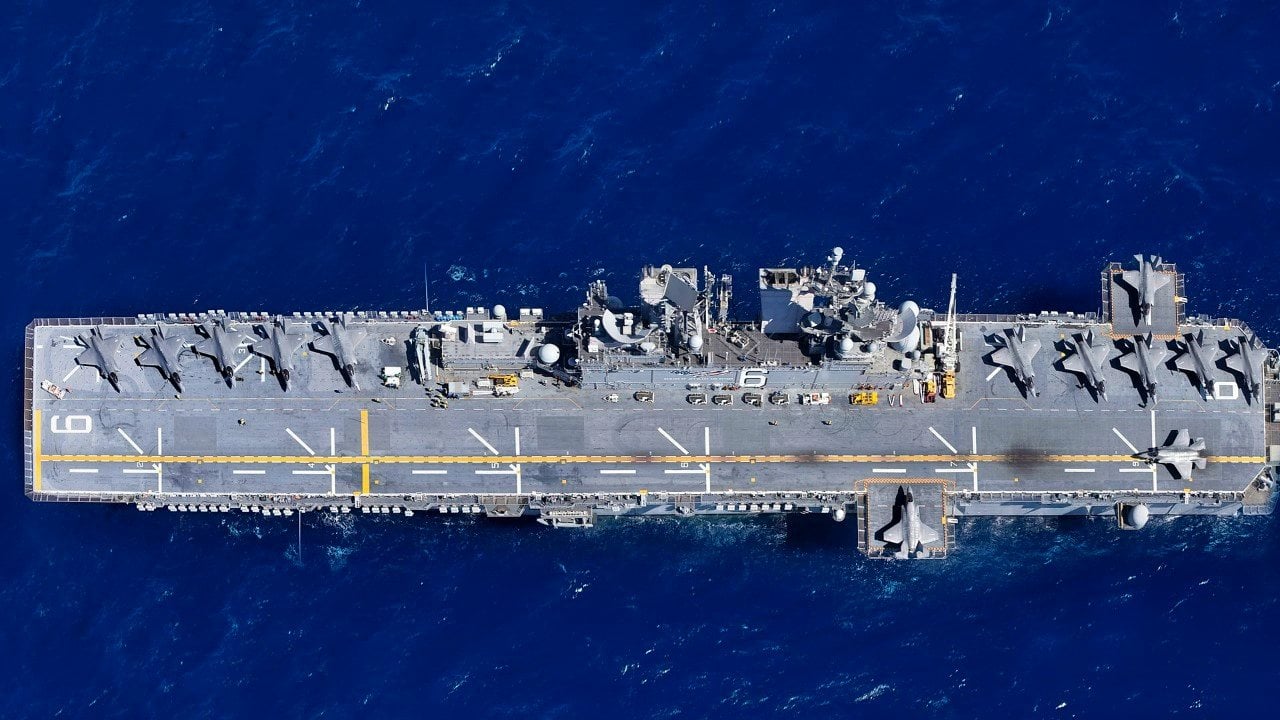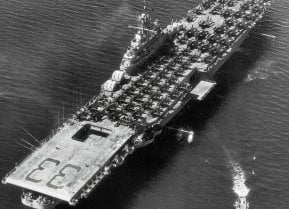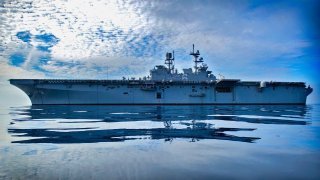Amphibious Assault Ships or LHA: The U.S. Navy's Mini Aircraft Carrier?
The US Navy fields a smaller alternative to the aircraft carrier, a landing helicopter assault (LHA) amphibious assault ship, when something more precise or expedient than an aircraft carrier deployment is required.
The US Navy is the world’s preeminent operator of aircraft carriers – with 11 currently in service. With eleven aircraft carriers, the US Navy can project airpower roughly anywhere in the world on short notice, operating from what is essentially a moveable airstrip. But sometimes an aircraft carrier is an imprecise tool – too large, or bloated, or expensive. Accordingly, the US Navy fields a smaller alternative to the aircraft carrier, a landing helicopter assault (LHA) amphibious assault ship, when something more precise or expedient than an aircraft carrier deployment is required. The LHA, specifically the USS America-class, was designed to land a Marine Expeditionary Unit (MEU) ashore using helicopters and tilt-rotor aircraft for transportation, and VSTOL aircraft for support.
The America has the spirit, if not the identical purpose, of an aircraft carrier. Yet, the America’s LHA format is notably distinct from its bigger cousins like the Nimitz- and Ford-class supercarriers.
Amphibious Assault Ship or LHA: Small and Powerful
The amphibious assault ship was designed to land and support ground forces in enemy territory. Initially, the ship design resulted from a conventional aircraft carrier being modified to serve as a helicopter carrier. Where the aircraft carrier serves primarily as a launching pad for strike aircraft, the amphibious assault ship serves as a platform to support ground forces ashore.
The America is based on the design of the USS Makin Island, which is an updated version of the Wasp-class amphibious assault ships. Whereas the Makin Island featured a well deck, or wet well, at the waterline of the boat’s stern, the America does not – in order to provide more space for aircraft. Yet, future ships in the class will again feature a well deck, where landing craft like the LCAC will be housing.
Neither the America, nor the Makin Island, runs on nuclear power like the US supercarriers. Instead, both assault ships consume JP-5 fuel, which happens to be the same fueled that many of the helicopters and jets aboard the America use, too. The America uses the JP-5 to (partially) power a CODLOG hybrid-electric propulsion system (similar to the one used on the Makin Island). The CODLOG allows the America to toggle between gas-turbines (for high speeds) and the diesel-electric engine.
The aircraft carriers is designed, of course, to launch aircraft. To launch aircraft, the aircraft carrier is equipped with a catapult system, which pulls an aircraft down the flight deck, accelerating the aircraft to speeds sufficient to sustain flight. The catapult system is either steam powered (as in the Nimitz) or magnet powered (as in the Ford). The America also launches ships – but not with a catapult system. Instead, the America simply provides the room needed for an aircraft to perform short and/or vertical takeoffs (and landings). Of course, that requires all aircraft aboard the America to be able to take off vertically – which they can.
The America is populated with a variety of helicopters, tiltrotors, and VSTOL aircraft –all of which can take off vertically. The helicopters aboard the America include the UH-1Y Venom and AH-1Z Viper attack helicopters; the CH-53E Super Stallion and CH-53K King Stallion transport helicopters; and the MH-60S Knighthawk multi-mission helicopter. The lone tiltrotor aboard the America is the MV-22B Osprey. And the America features two VSTOL aircraft – the AV-8B Harrier II and the F-35B Lightning II. The F-35 B-variant was designed specifically for deployment from LHAs like the America.
The timeline of USS America LHA
The America program began in 2001, at least on paper. Development didn’t begin until late 2005 and construction didn’t start until December 2008. The first two ships in the class (known collectively as Flight 0) were the LHA-6, the America, and the LHA-7, the Tripoli. The America was commissioned on October 11th, 2014, and operates from its home port in Nagasaki, Japan. The Tripoli was commissioned on July 15, 2020, and operates from its home port in San Diego, California. Three more LHAs (known collectively as Flight I) are already underway. LHA-8, the Bougainville, has already been launched, with commissioned expected sometime in 2024. The Bougainville will operate from its home port of Norfolk, Virginia. LHA-9, the Fallujah, was laid down in September 2023 at the Ingalls Shipbuilding facility in Pascagoula, Mississippi. LHA-10 is planned, but does not yet have a name. No LHAs are planned beyond LHA-10.

As the US pivots its focus towards the Indo-Pacific, platforms like the America will received increased attention, as a hypothetical conflict with China would rely heavily upon amphibious assault. Hopefully, the mettle of the America is never tested under such circumstances.
About the Author
Harrison Kass is a defense and national security writer with over 1,000 total pieces on issues involving global affairs. An attorney, pilot, guitarist, and minor pro hockey player, Harrison joined the US Air Force as a Pilot Trainee but was medically discharged. Harrison holds a BA from Lake Forest College, a JD from the University of Oregon, and an MA from New York University. Harrison listens to Dokken.


